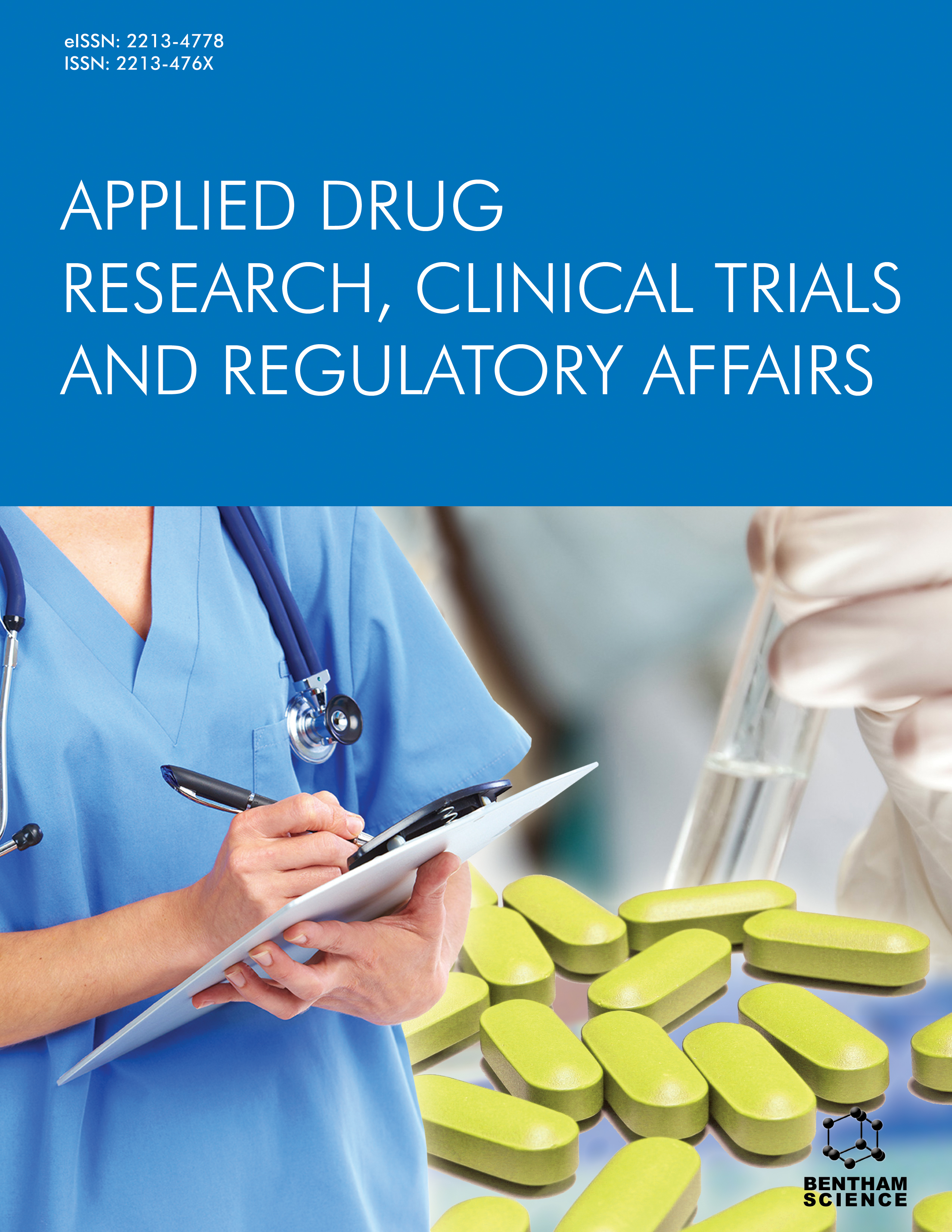- Home
- A-Z Publications
- Applied Drug Research, Clinical Trials and Regulatory Affairs
- Previous Issues
- Volume 8, Issue 2, 2021
Applied Drug Research, Clinical Trials and Regulatory Affairs - Volume 8, Issue 2, 2021
Volume 8, Issue 2, 2021
-
-
Regulatory Aspects of Personalised Medicines
More LessAuthors: Ishita Dhingra, Neel Mani and Arti R. ThakkarThe advent of big data analysis, genetic engineering and epigenetics has transformed the healthcare system by shifting the strategy for diagnosis, prevention and treatment of diseases from “one-size-fits-all” approach to “personalised” approach. Identification of biomarkers from molecular diagnosis has made tailoring of the medical treatment possible. Optimization of treatment decreases the costs related to the ineffective Read More
-
-
-
Comparative Study on Law Relating to Orthopedic Implants in India, the United States and European Union with Case Study
More LessAuthors: Lohithasu Duppala and Kolapalli V. R. MurthyBackground: The article provides a brief discussion on the comparative regulations on orthopedic implants in India, the United States, and European Union. Orthopedic implants are type of high-risk medical devices manufactured to substitute or replace a missing or damaged joint or bone or to support a damaged bone or joint and to improve the quality of life of patients. Thus, there is a need to regulate the import, m Read More
-
-
-
Regulations and Reimbursement of Digital Therapeutics: A Review of Current Global Practices and Future Prospects
More LessAuthors: Amit Dang, Dimple Dang and Pawan RaneThe ever-increasing use of digital technologies is rapidly changing the face of modern healthcare delivery. Healthcare systems are embracing digital health solutions to improve patient outcomes, enhance healthcare delivery, and reduce costs. Digital therapeutics (DTx) are now a popular category of digital health solutions aimed at preventing, managing, or treating medical disorders. These evidence-based technologies/pr Read More
-
-
-
Clinical and Regulatory Status of Silymarin
More LessAuthors: Tanya Ralli, Vivekanandan Kalaiselvan, Ritu Tiwari, Shatrunajay Shukla and Kanchan KholiIntroduction: Silymarin is a mixture of 9 different active flavanolignans extracted from the seeds of the milk thistle (Silybum marianum) plant. It has been extensively used by local people and medicinal practitioners in European countries from around 2,000 years for the treatment of liver and biliary-related disorders. Aims: This review article documents and critically assesses, for the first time, up to date the regulatory status o Read More
-
-
-
Intellectual Property Rights and Computer Applications for Pharmaceutical Research and Development
More LessAuthors: Sankha Bhattacharya and Dnyanesh SaindaneIntellectual Property Rights (IPR) are intellectual privileges that allow authors and inventors to defend their original inventions from misuse or theft. With the assistance of algorithms, clinical science has taken on a different level in recent years. Various advanced tools can be used to investigate pharmacokinetics profiling, in silico experiments, receptor simulations, drug synergistic effects, and so on. Computational scientists are Read More
-
-
-
A Note on Robotics and Artificial Intelligence in Pharmacy
More LessArtificial intelligence and robotics are two of the hottest and most recent technologies to emerge from the world of science. There is tremendous potential for these technologies to solve a wide range of pharmaceutical problems, including the reduction of the enormous amounts of money and time invested in the drug discovery and development process, technical solutions related to the quality of drug products, and an increas Read More
-
-
-
Pediatric Drug-Related Problems in an Indian Tertiary Care Hospital
More LessAuthors: Qaiser Jahan, K. Pallavi, R. Hamshika, Varun Talla, Jupally V. Rao and Satyanarayan PattnaikBackground: Improper drug usages expose patients to drug-related problems (DRPs) and can be the cause of patient morbidity and even mortality, especially frequent in hospitalized patients and pediatric groups. Objective: The objective of the present study was to identify and assess the drug-related problems in the pediatric department of tertiary care hospitals. Methods: The cross-sectional, observational study was carried o Read More
-
-
-
Efficacy of Topical Formulations in Healing of Caesarean Scars Using Non-Invasive Devices: A Controlled Trial
More LessAuthors: Alia Abdullah, Rawya Al Kredly and Mohamed BaguneidBackground: Despite the availability of many topical formulations for scar treatment, an objective evaluation of their effectiveness is lacking. Objective: To assess the physiological, structural, and mechanical parameters of scar healing by a scar ointment (MEBO-Scar). Methods: 45 patients from the Department of Obstetrics at Al Ain Hospital, UAE, with recently acquired Pfannenstiel scars were recruited into this prospective Read More
-
Volumes & issues
Most Read This Month
Article
content/journals/adctra
Journal
10
5
false
en


